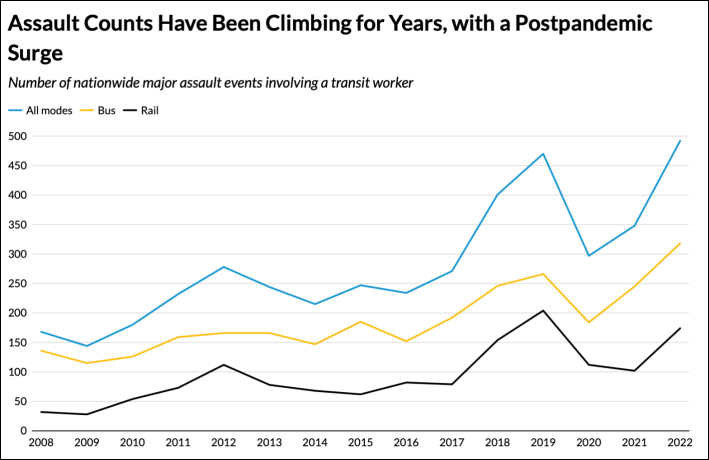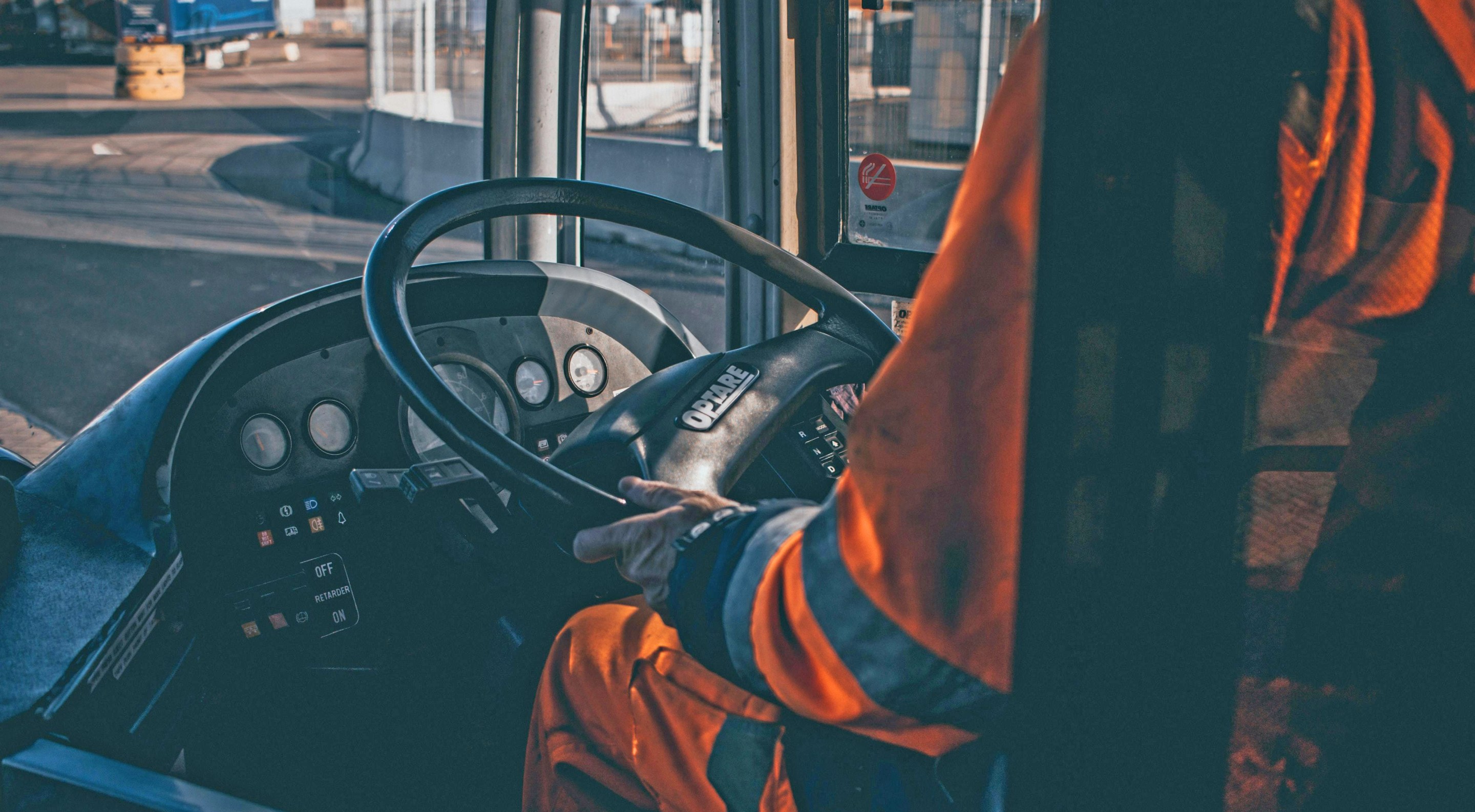Violent assaults on transit workers across the country have tripled over the last 15 years — and are up 77 percent in New York City in just four years — and new research says the trend may be a symptom of broken social structures which transit agencies alone can't solve.
According to the Urban Institute, America's transit workforce is experiencing an alarming increase in violent attacks, with incidents that resulted in a death or hospitalization climbing from 168 in 2008 to 492 in 2022.
Agencies aren't yet required to report assaults that didn't result in a serious injury, but there's reason to believe those are on the rise, too. In 2021, for instance, New Jersey alone reported 43 attacks that didn't require an ambulance for every one that did.
And in New York City, close to 160 bus and subway workers are projected to be assaulted this year, based on historic trends. It would be the most assaults since at least 2019. City transit workers also report being spit on frequently.
A 2022 TransitCenter report cited workplace harassment and assault as one of the key factors driving the national bus operator shortage — which itself driving deep cuts to service nationwide. Those researchers also pointed out that on a per-trip basis, major assault rates against workers had actually quadrupled between 2009 and 2020.
The new report focuses on what might be driving the troubling trend. And it's pretty much everything else but transit.
"The use of racial slurs [or] throwing hot beverages and spitting — these are acts of malice more than acts of pure aggression or defense," said Lindiwe Rennert, senior research associate for the Institute. "There’s this undercurrent of distaste towards one another, of disconnectedness and social non-cohesion. It makes me wonder about our tendency to look at our fellow human being as an adversary, as opposed to as a compatriot. ... We’re products of our environments, and our environments are worrying."

Data may back up that hypothesis. Rennert found that rising assaults on transit workers in 2022 were positively correlated with increases in the "Gini Index" — a common measure of income inequality within a metropolitan region — and with the rising number of "riots, demonstrations, protests, and accounts of law enforcement violence against civilians."
Put another way: before disproportionately low-income and radically marginalized passengers even arrive at a bus or a train stop, they're carrying the weight of the unjust and violent society in which they live. And once they arrive, those indignities are often mirrored in the transit experience itself, including long waits at unsheltered stops with no seats, steep fares they can't afford, police violence if they're unable to pay, route maps, schedules, and services that weren't designed with their actual needs in mind, and a universe of other frustrations that can all too easily boil over.
"If you look at the space of the bus, it’s this tinderbox of spatial competition and lack of control," Rennet added. "You have no control over the congestion you’re sitting in; maybe the stops aren’t being announced over the voiceover box because it’s broken; you may have to stand for long periods of time when you need a seat. ... [Transit workers are] a representation of larger institutions, and often, they’re one of the only ones we engage with."
Rennert said that improving service can be a "first step" to calming transit riders' frayed nerves, as can removing fares that often become a flashpoint for an assault.
But to really reckon with violence on shared transportation, Rennert thinks policymakers should act beyond their local transit agency — which might do after-the-fact prevention such as Plexiglas shields for bus drivers, as the MTA did — and instead explore wide-reaching structural solutions to the rampant inequality that plagues the entire society. For instance, automatically enrolling qualified residents in social safety net programs might not immediately bring peace and calm to buses and subways, but they could have a radical impact over time.
"I want policymakers to realize that these acts of violence may just be how the public is lashing out from other inefficiencies, other ineptitudes, other dearths in our lives," she added. "And if our other needs are taken care of — including those that exist completely outside of transportation — then the likelihood of us lashing out may decrease."






